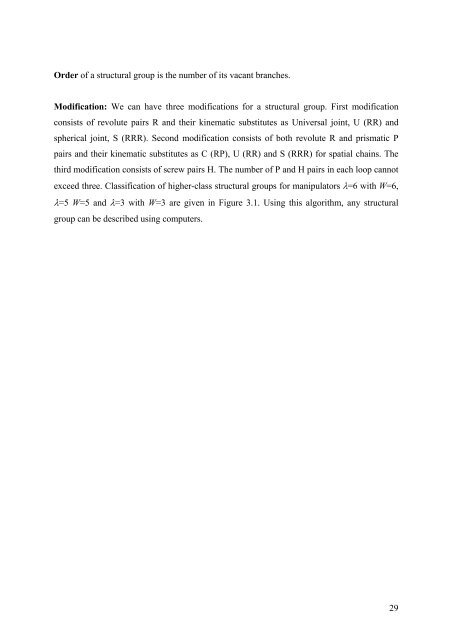Kinematic and Dynamic Analysis of Spatial Six Degree of Freedom ...
Kinematic and Dynamic Analysis of Spatial Six Degree of Freedom ...
Kinematic and Dynamic Analysis of Spatial Six Degree of Freedom ...
You also want an ePaper? Increase the reach of your titles
YUMPU automatically turns print PDFs into web optimized ePapers that Google loves.
Order <strong>of</strong> a structural group is the number <strong>of</strong> its vacant branches.<br />
Modification: We can have three modifications for a structural group. First modification<br />
consists <strong>of</strong> revolute pairs R <strong>and</strong> their kinematic substitutes as Universal joint, U (RR) <strong>and</strong><br />
spherical joint, S (RRR). Second modification consists <strong>of</strong> both revolute R <strong>and</strong> prismatic P<br />
pairs <strong>and</strong> their kinematic substitutes as C (RP), U (RR) <strong>and</strong> S (RRR) for spatial chains. The<br />
third modification consists <strong>of</strong> screw pairs H. The number <strong>of</strong> P <strong>and</strong> H pairs in each loop cannot<br />
exceed three. Classification <strong>of</strong> higher-class structural groups for manipulators λ=6 with W=6,<br />
λ=5 W=5 <strong>and</strong> λ=3 with W=3 are given in Figure 3.1. Using this algorithm, any structural<br />
group can be described using computers.<br />
29
















